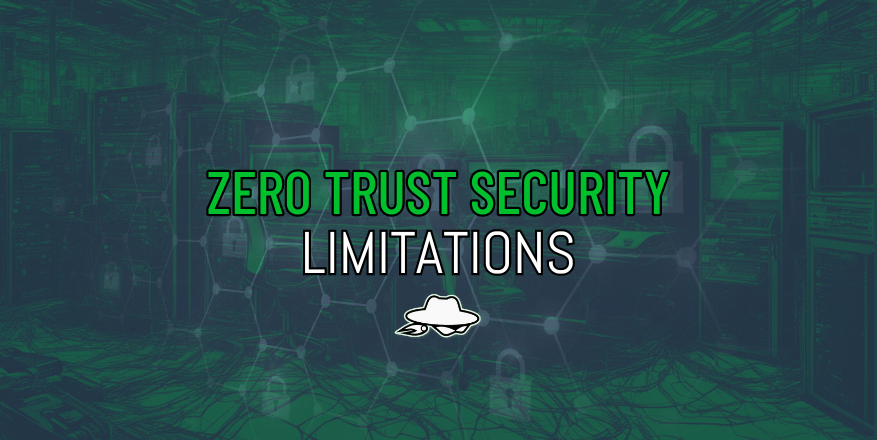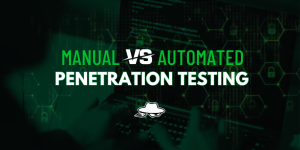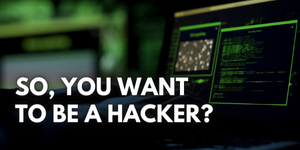Understanding the Advantages and Challenges of Zero Trust Security

Reading Time: 4 Minutes
Introduction
Zero trust is a security framework developed to handle the changing environment of risks that modern businesses face, both external and internal.
Traditionally, perimeter security measures such as firewalls were used to secure critical resources; while assuming that everything inside a network is trustworthy, however, digital transformation and hybrid cloud infrastructures have rendered traditional tactics ineffective.
Rooted in the principle of “never trust, always verify”, Zero Trust operates on the assumption that every connection and endpoint poses a potential threat, and each interaction requires verification and authorization to ensure compliance with security regulations. This strategy is especially important in today’s climate when remote work and digital transformation have increased vulnerabilities.
The zero trust architecture, developed by John Kindervag in 2010, implies that all connections are untrustworthy, requiring network traffic tracking and inspection, strict access controls, and resource verification. Zero trust needs a thorough integration of security mechanisms across all domains, including user access, data protection, and network segmentation.
Nevertheless, the implementation of Zero Trust is not without its limitations and obstacles. Key challenges encompass integrating with legacy systems, managing complexity, ensuring optimal application performance, handling associated costs, countering insider threats, and fortifying defences against credential theft and lateral movement facilitated by social engineering exploits.
Key components of a Zero-Trust Architecture are
- Micro-segmentation involves partitioning a network into smaller, more manageable sections to prevent lateral movement and minimize the potential fallout of a breach. It regulates traffic between these segments, enhancing control and security measures.
- Identity and Access Management (IAM) entails implementing strong identity verification procedures, such as multi-factor authentication (MFA), and single sign-on (SSO), to ensure that only authorized people and devices have access to resources.
- Network Security Controls: Using firewalls, intrusion detection/prevention systems (IDS/IPS), and encryption to monitor and safeguard traffic both inside and outside the network perimeter.
- Zero trust network access (ZTNA), also known as software-defined perimeter(SDP), is a security policy based on the concept of zero trust. Aimed at protecting organizational networks and resources from external threats by dynamically establishing and enforcing software-defined perimeters around specific assets. ZTNA operates on the notion that no entity is trustworthy, it needs explicit authorization to access all network resources. This architecture provides a secure and scalable alternative to standard network security measures such as virtual private networks (VPNs) and works both on-premises and cloud environments.
- Continuous Monitoring and Analytics: Using real-time monitoring and analytics technologies to spot abnormalities, strange behaviors, or security threats, and responding quickly to mitigate risks.
Key Advantage
One of the key benefits of Zero Trust security is its potential to provide better protection for people and data. This is achieved through strict authentication and authorization of all users, devices, and applications, regardless of their location, which minimizes the likelihood of a security breach.
Limitations of Zero Trust Security
While zero trust is a significant improvement over traditional perimeter-based security models, it’s not an all-in-one solution and has its limitations and challenges.
Configuration issues with legacy systems
Integrating zero-trust principles into legacy systems and applications, originally designed with perimeter-based security in mind, often poses significant challenges. These legacy components may either need to be retained as they are, potentially leaving security vulnerabilities or demand alternative security measures to safeguard them effectively. Alternatively, replacing these legacy systems entirely is an option, though one that can be both expensive and time-intensive.
Legacy technologies commonly depend upon static rules, which can be predetermined and not adaptable to changing circumstances. In contrast, Zero Trust makes use of dynamic, conditional policies that take into account various contextual factors, such as the source of the access request, the user’s location, and the characteristics of the device seeking access.
It’s crucial to assess legacy applications and systems to verify their compatibility with Single Sign-On (SSO), Identity and Access Management (IAM), and other Zero Trust Network Access (ZTNA) software.
Complexity – Misconfiguration
Implementing a Zero Trust architecture can pose a significant complexity challenge. The implementation could be complex and resource-intensive, requiring significant planning, investment, and expertise.
Companies and organizations must gain a comprehensive understanding of their data and workflows to be able to implement such architecture.
Organizations face the challenge of managing data scattered across various sources today. This data may reside within third-party suppliers, including cloud service providers, network suppliers, and payment systems. Compounding the issue, some organizations permit employees to use their own devices (BYOD) or work remotely, increasing the number of endpoints beyond the organization’s direct control. Effectively mapping these endpoints and connections requires time and skilled personnel.
Application performance
Performance issues related to Zero Trust architecture are a critical concern for organizations aiming to implement robust security measures. One key challenge lies in managing latency, as Zero Trust adds an extra network hop between users and resources, potentially slowing down data transmission. Ensuring efficient end-to-end latency measurement becomes crucial, encompassing factors such as packet processing time and response times from destination servers. Additionally, optimizing network paths, particularly through last-mile and cloud peering, plays a vital role in reducing latency and enhancing overall performance. Diverse network paths within the Zero Trust infrastructure are also essential for maintaining reliability and enabling seamless traffic rerouting during network disruptions.
Providers must develop comprehensive measurement methodologies and user-friendly monitoring tools to identify and address performance bottlenecks effectively. By addressing these challenges, organizations can ensure that their Zero Trust implementations deliver optimal performance while maintaining stringent security standards.
See Also: Solutions: Web Application Pentesting
Cost
One limitation of Zero Trust in terms of cost is the potential for increased expenses associated with implementing and maintaining the necessary infrastructure, technologies, and processes. Adopting a Zero Trust Architecture frequently necessitates significant investments in new security solutions, such as identity and access management (IAM) platforms, multi-factor authentication (MFA) systems, encryption technologies, and network segmentation tools. Organizations may also need to allocate resources for training employees, hiring skilled cybersecurity experts, and conducting regular security assessments to verify the effectiveness of the Zero Trust approach.
As a result, the upfront and ongoing costs of implementing Zero Trust can be substantial, particularly for smaller organizations or those with limited budgets. By addressing these issues, organizations may ensure that their Zero Trust solutions perform effectively while adhering to strict security standards.
Public-Facing APIs
Public-facing APIs pose a challenge within the context of zero trust because they represent an external entry point into an organization’s network and services. Zero trust operates on the principle of continuous verification and authentication, which becomes complex when dealing with external entities like public APIs.
Perimeter-based security approaches are inadequate for protecting APIs, emphasizing the need to embed security into API development and deployment processes.
These APIs are accessed by various users and systems outside the organization’s control, making it difficult to establish and maintain trust boundaries effectively. Ensuring the security of public-facing APIs requires additional measures such as thorough inventory management, vulnerability assessments, and proactive security controls to mitigate risks and strengthen the overall zero trust architecture.
Maintenance – Operational Challenges
One often overlooked issue with Zero Trust architecture is the need for continuous maintenance and administration. Firstly, maintaining a Zero Trust environment requires ongoing monitoring and management of access policies, user identities, device statuses, and network segments. This can be challenging, especially in large and dynamic environments with a high volume of users, devices, and applications.
Maintaining a vast network of strictly defined permissions requires constant updates, especially as companies evolve with new hires, role changes, and employee departures. Failure to promptly update access controls can lead to unauthorized access to sensitive data.
Insider threats
Zero trust focuses on verifying user identities and devices, but it may struggle to detect and prevent insider threats posed by authorized users with malicious intent. Insiders with legitimate credentials can abuse their access privileges to compromise data or systems, making it challenging for zero-trust architectures to differentiate between legitimate and malicious activities.
MFA can help minimize these risks by making it harder for insiders to pass credentials to outsiders for malicious use, but the threat still exists.
Credential Theft and Lateral Movement/Social Engineering Attacks
Social Engineering Attacks: Despite potent technical controls, hackers may still target users through social engineering tactics, such as phishing emails or pretexting. If users are deceived into disclosing their credentials or bypassing security measures, attackers can gain unauthorized access to sensitive resources.
Credential Theft and Lateral Movement: If hackers manage to steal valid user credentials or compromise a device within the zero-trust environment, they can potentially move laterally across the network, leveraging their initial foothold to access additional resources and escalate privileges. Zero trust aims to minimize the impact of such attacks through segmentation and access controls, but determined attackers may still find ways to navigate the network undetected.
Not the silver bullet
Zero trust is something many companies have discussed lately. They see it as a crucial way to reduce risk, but very few companies have fully applied a Zero Trust approach. As per Gartner, Inc., around 10% of big firms will have a well-established, measurable zero-trust program by 2026. This is a major rise from the current less than 1-2%.
The research cautions that by 2026, about 50% of cyberattacks will be directed towards areas that either lack or cannot be shielded by zero-trust controls. These vulnerable areas include public-facing APIs and social engineering scams.
Overcoming the limitations of Zero Trust involves a holistic and adaptive approach. To ensure a smooth transition from legacy systems, businesses should adopt a gradual implementation strategy, prioritizing sensitive areas.
While zero trust principles provide a strong foundation for risk reduction, they are not a cure-all for all cyber threats, furthermore, organizations should supplement zero trust controls with regular penetration testing to identify and remediate vulnerabilities proactively. Employee awareness training is also critical to educate staff about the risks of social engineering and phishing attacks, promoting a security-conscious culture across the organization.
Are you looking for a better way to secure your business? Whether you need a product audit, vendor security assessment, or overall security testing, we can help. Our team of experts will work with you to identify your specific security needs and provide tailored recommendations to improve your overall security posture.
To find out more about how Black Hat Ethical Hacking can help you, check out our Solutions








